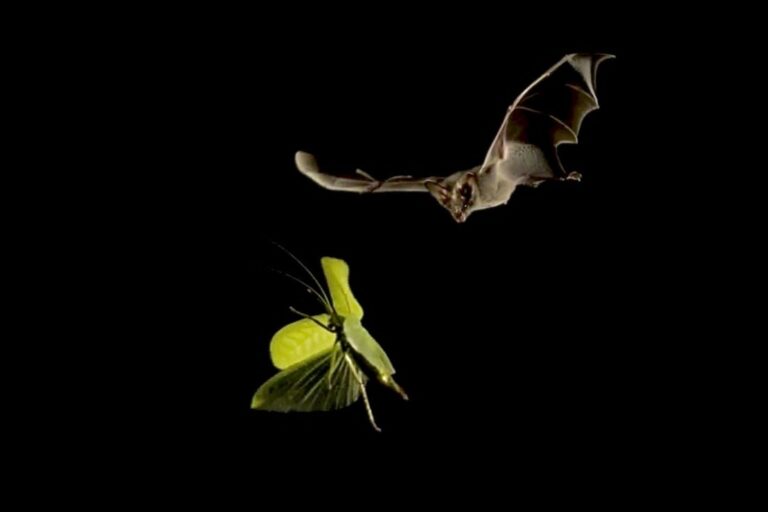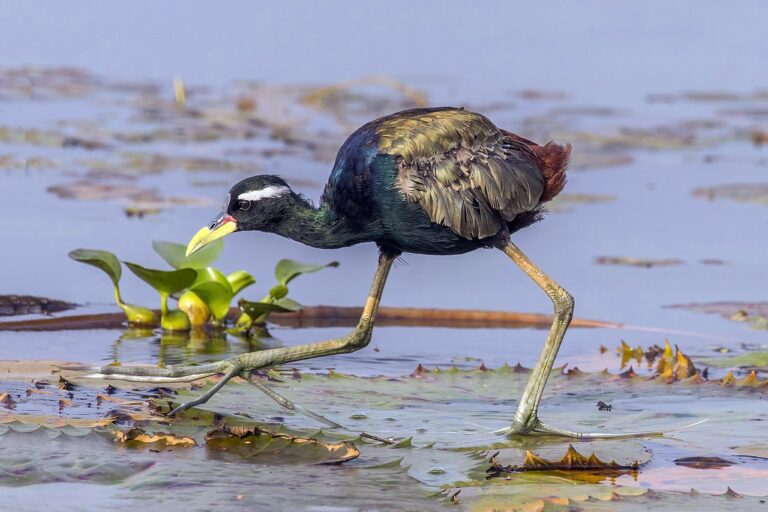- New research and video evidence show that adult female crested gibbons perform captivating dances in both captive and wild settings.
- The funky sequences of rump, arm and leg twitches have in the past been likened to the human “robot dance” and hypothesized as fulfilling a role in gibbon courtship.
- Experts say improved understanding of the dance brings new insight into small ape cognition and social structures, which will ultimately help conservationists better design and implement interventions to protect them.
Gibbons are famed for their graceful agility high in the forest canopy. Swinging effortlessly from branch to branch, their bodies spilling through the trees, the small apes seem to defy the basic laws of gravity. But it turns out their beauty in motion doesn’t stop there: They also perform captivating dances, according to the findings of a new study.
It documents the dance routines of four species of crested gibbons native to the dense but rapidly diminishing forests of mainland Southeast Asia. The researchers say the movements aren’t random gyrations. Rather, the gibbons are using their rhythmic vogueing routines of up to two minutes at a time as a visual communication tool.
Biologists have long known that female crested gibbons perform sequences of peculiar and sudden rump, arm and leg twitches, both in captive settings as well as in the wild. A 2016 study, for instance, likened the dance of wild eastern black-crested gibbons (Nomascus nasutus) to the timeless human “robot dance.” However, the structure and circumstances surrounding the gibbon’s dance have remained largely shrouded in mystery.

To unlock the secrets of the gibbon bop, Camille Coye, a postdoctoral researcher at the Jean Nicod Institute in France, and her colleagues from Germany and Norway meticulously scrutinized 37 videos of female crested gibbons kept in captivity at zoos and rescue centers in Australia, Europe and Vietnam. They also interviewed field researchers to gather their perceptions of gibbon dances in the wild.
The team’s sample encompassed four out of the seven known species of crested gibbon: northern white-cheeked crested gibbons (Nomascus leucogenys) and southern white-cheeked crested gibbons (N. siki), both listed as critically endangered on the IUCN Red List; northern yellow-cheeked crested gibbons (N. annamensis); southern yellow-cheeked crested gibbons (N. gabriellae), both classified as endangered.
All four gibbon species have suffered dramatic population declines over the past few decades and are now confined to remote patches of isolated forest in Cambodia, Laos and Vietnam. According to the IUCN, the immediate threats to the primates include loss of habitat via illegal logging, agricultural encroachment, and roads and other infrastructure development; and hunting for food, medicinal use and capture for the illegal pet trade.
A new method of communication
The video analysis confirmed gibbons perform clearly grouped series of rhythmic and repetitive movements, which the authors suggest is best described collectively as a dance.
Unlike stereotypical stress-induced behaviors sometimes seen in captivity, the deliberate and structured nature of the movements hint at a dance “grammar” similar to linguistic forms of communication. “[Movements] are often organised in groups of up-down or left-right movements and they follow a clear rhythm,” study co-author Kai R. Caspar, a zoologist at Heinrich Heine University Düsseldorf in Germany, said in a statement.
The dance also showed hallmarks of being intentionally directed at an observer — a vital characteristic of modes of communication. Dancing gibbons often checked during a performance to see whether they were being watched. To lead author Coye, this suggests the gibbons desired to communicate through their movements, confirming the dance as “a common and intentional form of visual communication,” she said.
Why dance?
Given the dances are performed exclusively by sexually mature females, the researchers reckon the movements have a role in courtship. “Within species, the dances are evidently primarily used to solicit copulation,” said study co-author Pritty Patel-Grosz, a professor of linguistics at the University of Oslo.
The connotation with mating means dance could play a role in sexual selection, the authors suggest, with potential partners using dance as a measure by which to choose their mates. It’s conceivable that the clarity of rhythm and movement could serve as indicators of neurological health and physical vigor, they say. Thus, dancing prowess might confer an evolutionary advantage on individuals.

The dances also likely have a meaning beyond courtship, Patel-Grosz added. Female gibbons danced while they seemed to be experiencing frustration with their captivity and also performed moves directed toward human, rather than gibbon, observers. These instances suggest the dance behaviors may also function as general social or attention-seeking gestures.
Although the study of nonhuman primates like gibbons can deepen our understanding of human nature, the authors say the crested gibbon dance shouldn’t be considered a furry analog of human dance forms. Human dance and gibbon dance likely evolved completely independently, they say. For one, no clear evolutionary lineage exists between dance in gibbons and humans given no other type of ape performs them. Gibbons were likely born with an innate instinct to perform their dances, they conclude, whereas human dance is typically determined by culture.
Read more: Saving India’s only ape, the hoolock gibbon
Knowledge improves conservation
Susan Cheyne, vice chair of the IUCN Primate Specialist Group Section on Small Apes, who wasn’t involved in the study, said that while it seems the gibbons are intending to communicate through their movements, more observations from the field would add more clarity. “We need to be wary about drawing too many broad conclusions given the lack of wild data,” she said.
Gibbons are perhaps better known for their uproarious morning singing bouts, often performed as a duet, that signal their presence far and wide across the treetops of their native Asian forests. They also have a wide repertoire of non-singing calls, including contact calls, mating calls and infant-mother communication calls.
“After their duets/morning calls, gibbons will engage in visual displays, shaking branches and swinging around the trees,” Cheyne told Mongabay, adding that it makes sense for them to have developed other modes of visual communication, such as dance.

The new study serves as a starting point from which to build a deeper understanding of gibbon communication, said Cheyne, an area of research vital to conservation efforts. Knowledge of cognitive complexity can help rescue centers improve the design of rehabilitation programs, for instance. In wild settings, it can help conservationists ensure habitat complexity and diversity is appropriately maintained, Cheyne said.
The next step in the dance research will be to decode the full meaning behind the movements and to explore their cognitive ties, according to the study. Elucidating whether dance is closely linked to reproductive fitness, for instance, and why some females dance while others don’t, would bring new insights into primate cognition and social dynamics — information that could ultimately furnish conservationists with tips on how best to protect the species.
CITATION:
Coye, C., Caspar, K., & Patel-Grosz, P. (2024). Dance displays in gibbons: Biological and linguistic perspectives on structured, intentional, and rhythmic body movement. Primates.doi:10.1007/s10329-024-01154-4
Fan, P., Ma, C., Garber, P. A., Zhang, W., Fei, H., & Xiao, W. (2016). Rhythmic displays of female gibbons offer insight into the origin of dance. Scientific Reports, 6(1). doi:10.1038/srep34606
This story was reported by Mongabay’s Global team and first published here on November 11, 2024.
Banner image: A white-cheeked gibbon. Image by Roger Smith via Flickr (CC BY-NC 2.0).













